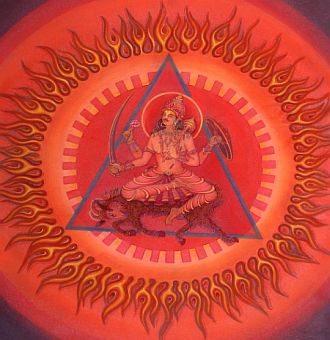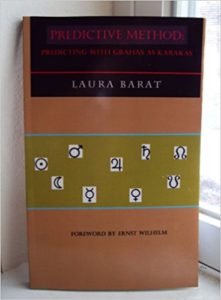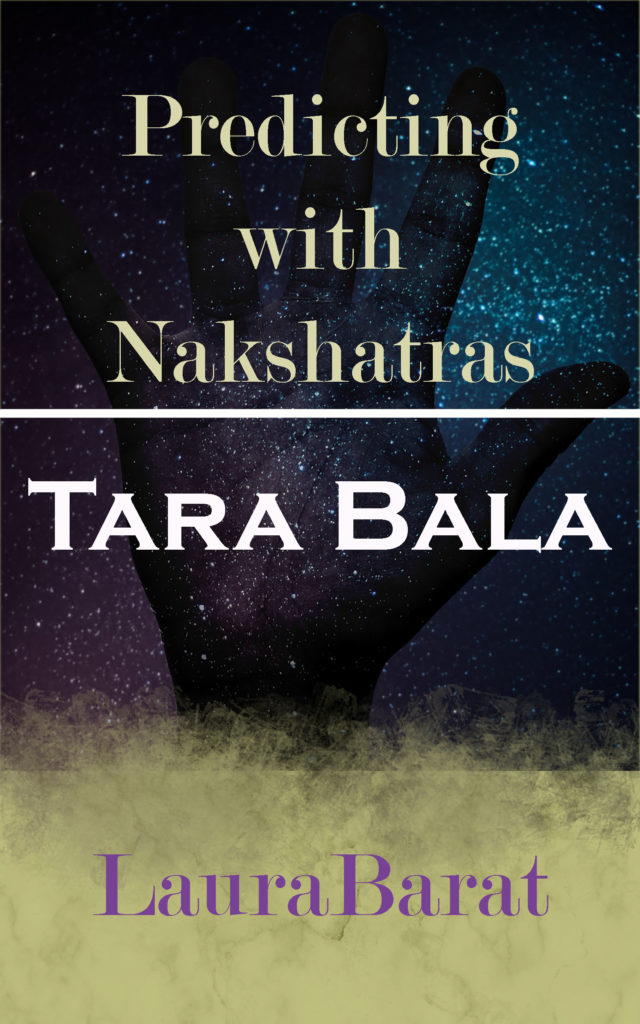The Drekkana, also known as the Decans, or Third Harmonic, is one of the most important Vargas or Divisional Charts. Secrets of the Decans reveal how we use our will power and how we get along with all our relations. Being a derivative of the third house which rules over siblings, associates, self-effort, rote learning and skills, the most important planet here is Mars. This varga reveals how we utilize our will power in relationships with all types of people in our lives and whether that will-power improves those associations or harms them. As the varga of siblings, it shows our happiness with our siblings but not the siblings’ lives. To see the lives of other people, that is an entirely different technique.
Mars is the most important planet because it is the third planet and represents siblings, except for the oldest, and associates. Mars does not represent friends but people we associate with but who are not necessarily our friends like co-workers and neighbors. Mars is will power and how we employ that will power. If we use our will in a productive way, we automatically have more harmonious relationships with others.
The Drekkana reveals where a person is socially capable or not socially capable and which relations the native does and does not get along with. For example, if Mercury is well-disposed in this Varga, the native gets along with friends and is able to make win/win situations with them.
In addition to the planets producing relations in your life due to their natural indications, i.e., Mars as siblings and associates, Mercury as friends, Venus as lovers, etc., you will also analyze the house cusps and any planets conjoined those cusps, i.e., in the same Sign and also the lord of those cusps. House cusps or Bhavas, represent ‘the thing coming into being’, the ‘actual, created thing’ here on Planet Earth. So to discover more about a person’s relations it is crucial to analyze the house cusps in the Drekkana along with the planets. House cusps are points that are calculated exactly the same way as the planetary placements are calculated.
It is important to analyze the planets as producers (karakas) to discover the type of people with which the native has harmonious relationships or otherwise. Saturn, Rahu, Ketu or Mars conjoined house cusps in Drekkana will harm a relationship with the person represented by that house cusp. These planets conjoined Karakas or planets representing certain people will also harm the relationship with that specific person.
If you are an only child, your pre-school, neighborhood friends, play-dates are who you develop your social skills by.
Calculate Drekkana:
The Three Deities of the Drekkana:
- Narada: the Creation principle. Planets in 0° – 10° of a Sign. These planets use their will to create things. They create new opportunities and ideas in relations to the planets’ meanings and for those people the planet represents. This energy is akin to that of the outer planet Uranus and its exciting, creative influence.
- Agastya: the Sustaining, Maintaining principle: Planets in 10° – 20° of a Sign. These planets are used to maintain stable situations and order and to improve upon the potential of those things indicated by the planet. The person will make the most out of what is already there or existing and attempt to transform it into something more delighting and transcendent. This relates to the planet Neptune.
- Durvasa: the Destructive principle. Planets in 20° – 30° of a Sign. These planets destroy things that are no longer needed, that are getting in the way of growth, that are redundant and time-consuming. A good analogy is that of the planet Pluto and the Plutonian energy.
Planets that are well-disposed by Planetary States and dignity in D3 and also ruled by Narada (0 – 10 degrees) are those planets the native will use to create situations from which everyone will benefit. If the planets are not well-disposed, what they create is challenging and the new things they begin will cause discord or resentment or both. Animosity may occur from the native’s creative pursuits or their new ideas. This is not negative by itself. It is part of the process the person must go through while they create. If there are planets in challenging Lajjitaadi Avasthas (planetary states), then the person and others may become frustrated, bored or angry by the new things they enable and create in their life, but those things are part of the evolutionary growth of the native.
If the planets are afflicted and ruled by Agastya then the native has trouble maintaining the indications of that planet or they maintain those indications in a draining and harmful way. The person can also sustain something that is not good for anyone including the native. These planets ruled by Agastya are planets that have a lot of potential and it is up to the person to grow and manifest their potential, they are working with something that already exists. Through trial and error, the native will find the most efficient way to manifest afflicted planets in the Drekkana. For example, if Venus is heavily afflicted in the Drekkana and occupies between 10 and 20 degrees in the Birth Chart, then the person may maintain relationships that are toxic or abusive. Through trial and error and Time, the native will hopefully come to the conclusion that they must make a different habit and effort with Venus.
If planets are well-disposed in the Drekkana and ruled by Agastya, then those planets easily reach their potential with the effort of the native.
The 6th house is also important in this varga because this is the 3rd varga and when you add up numbers 1, 2 and 3 it equals 6.
Do remedies for that planet if you are running a dasa of that planet.
When planets are afflicted in Durvasa (20 – 30 degrees in Birth Chart), these planets destroy their indications and the native is not ready for it or is still attached to certain things pertaining to that planet. These planets destroy their indications in a way that causes discord, animosity or failure. Through the frustration of using these planets in ways that are harmful and unfulfilling, the native comes to understand they are getting rid of the wrong aspects of the planet and can use that planet to destroy those indications that are actually harmful.
Planets that are well disposed and ruled by Durvasa are planets that are supremely efficient in getting rid of the old that is no longer useful to make room for something new. The native is able to let go of these things without any underlying regret or attachment.
Mars is a planet of hunger and need, he rules over the Fire element which causes hunger. Mars makes us hungry for things that we must pursue in order to become satiated. That is the underlying foundation of Mars existence.
The Drekkana shows where we put our will power to get what we think we need and how we use that will-power to get it. Some people are like a bull in a china shop when they are trying to pursue something. They knock things over, they step on toes, they leave a wake of destruction in pursuing their goals. Analyzing the Drekkana is where you will see if the native is a ‘Bull in a China Shop’ or is pursues their goals and either no one notices or others gain benefit.
Those with a well-disposed Drekkana have an efficient way of navigating relationships and people feel really good about the way the native goes about getting what they want. They create win/win relationships.
The third house cusp is the most important house cusp in the Drekkana. This cusp, any planets conjoined and the cusp lord are also very important to analyze when getting a full picture about how the person uses their will and how well they get along with others. Secondarily, the sixth house cusp is important because it shows our enemies and the numbers within three (1, 2 and 3) add up to six. Thirdly, the ninth cusp should be analyzed. Through the ninth it is revealed if the person is creating grace and luck through their actions. If they are acting and pursuing in a way that inspires others, they can be productive in a way beneficial to others or they are causing disapproval of their actions.
Yavana Jataka and Brihat Jataka have descriptions of all the Drekkanas.
Water-bearing Drekkanas provide something other people need. When identity factors fall in these Drekkanas, the native does an exceptionally good job in understanding what others need and they are able to provide it.
Buy Kala Software





